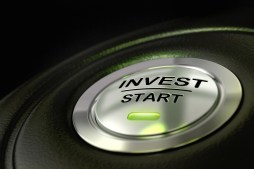The Essential Elements of Email Automation: Understanding the Basics
Email automation has transformed the way businesses communicate with their customers. By automating repetitive email tasks, companies can save time, increase efficiency, and enhance engagement. In this article, we will break down the essential elements of email automation to help you understand its basics and how to leverage it for your marketing strategy.
What is Email Automation?
Email automation refers to the use of software tools that send emails automatically based on predefined triggers or schedules. This means that instead of manually sending each message, businesses can set up a system that delivers personalized content to subscribers at crucial moments. Common examples include welcome emails for new subscribers, reminders for abandoned carts, or birthday greetings.

The Benefits of Email Automation
Implementing email automation brings several advantages. Firstly, it saves time by allowing marketers to focus on strategy rather than manual tasks. Secondly, automated emails tend to have higher open and click-through rates since they are often sent at optimal times based on user behavior. Additionally, automation ensures consistency in communication which helps build brand trust and loyalty.
Key Components of an Email Automation Strategy
To effectively implement email automation, consider these key components: 1) **Segmentation** – Dividing your audience into distinct groups based on demographics or behaviors allows for more targeted messaging. 2) **Triggers** – Identify specific actions that will prompt automated emails be sent (e.g., signing up for a newsletter). 3) **Personalization** – Tailoring content in your emails makes them more relevant and engaging for recipients.
Tools and Platforms for Email Automation
There are numerous tools available to help businesses automate their email marketing efforts. Popular platforms like Mailchimp, HubSpot, and ActiveCampaign offer user-friendly interfaces along with powerful features such as A/B testing and analytics tracking. Choosing the right tool depends on your business needs and budget.
Best Practices for Successful Email Automation
To maximize the effectiveness of your email automation campaigns: 1) Ensure compliance with regulations like GDPR by obtaining consent before sending marketing emails; 2) Regularly update your subscriber list to maintain engagement; 3) Monitor performance metrics such as open rates and conversion rates to refine your strategy over time.
Understanding the basics of email automation is crucial in today’s digital landscape where effective communication can set you apart from competitors. By implementing these essentials into your marketing strategy, you’ll not only save valuable time but also foster stronger relationships with your audience through timely and relevant messaging.
This text was generated using a large language model, and select text has been reviewed and moderated for purposes such as readability.











